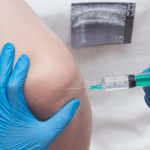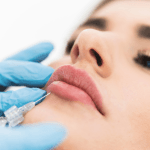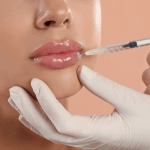The field of non-surgical aesthetic treatments continues to advance rapidly, driven by technological innovations, patient demand for minimally invasive procedures, and an increasing focus on natural-looking results. As we move into 2025, new developments in aesthetic medicine are reshaping the way healthcare professionals approach cosmetic enhancements.
With the rise of new trends in aesthetic medicine, clinics and practitioners are now offering more sophisticated solutions that require less downtime while delivering impressive outcomes. From regenerative treatments to AI-driven skincare personalization, the latest advancements are setting a new standard for patient satisfaction. Understanding these innovations allows professionals to stay ahead in a competitive market while offering cutting-edge services tailored to evolving patient needs.
Key Trends in Non-Surgical Aesthetic Medicine for 2025
The demand for minimally invasive cosmetic procedures continues to grow as patients seek treatments that provide noticeable improvements without the risks associated with surgery. This shift has led to the emergence of several groundbreaking techniques and technologies.
Regenerative Aesthetic Treatments
One of the most significant advancements in aesthetic treatments is the use of regenerative medicine. Patients are increasingly opting for procedures that leverage their body’s natural healing mechanisms to achieve long-lasting results.
Stem Cell-Based Therapies
Stem cell applications in aesthetics are becoming more refined, with injectable treatments designed to improve skin elasticity, repair tissue damage, and enhance overall skin quality. These therapies offer a promising alternative to traditional dermal fillers.
Exosome Therapy
Exosome-based treatments are revolutionizing skin rejuvenation by promoting cellular regeneration and improving collagen production. This cutting-edge approach is particularly effective for treating fine lines, pigmentation, and overall skin texture.
Next-Generation Injectable Treatments
Injectables remain a cornerstone of non-surgical aesthetic treatments, but 2025 brings significant improvements in formulation, longevity, and application techniques.
Longer-Lasting Neurotoxins
New-generation botulinum toxin products are extending the duration of results, reducing the need for frequent touch-ups while maintaining a natural appearance. These advancements provide more flexibility for both patients and practitioners.
Bio-Stimulating Fillers
Unlike traditional fillers that simply add volume, bio-stimulating fillers encourage collagen production, leading to more natural, long-term facial rejuvenation. Patients benefit from a gradual, yet sustained improvement in skin quality.
AI-Driven Skincare and Aesthetic Planning
Artificial intelligence is transforming how practitioners assess and recommend aesthetic treatments. AI-powered imaging and diagnostic tools allow for highly personalized treatment plans based on a patient’s unique skin composition, aging patterns, and aesthetic goals.
Personalized Skincare Formulations
Advanced algorithms can now analyze skin at a molecular level, enabling the creation of bespoke skincare products that precisely address individual concerns. This approach enhances patient satisfaction and reinforces the importance of medically guided skincare.
Predictive Treatment Simulations
AI-assisted aesthetic simulations allow patients to preview potential results before committing to a procedure. This innovation improves patient confidence and helps set realistic expectations.
Expanding the Scope of Minimally Invasive Body Contouring
Body contouring treatments have evolved beyond fat reduction, incorporating muscle enhancement and skin tightening techniques. These advancements provide comprehensive solutions for patients looking for non-surgical body transformation.
Radiofrequency and Ultrasound Technologies
Non-invasive skin tightening continues to improve with advanced radiofrequency (RF) and ultrasound-based devices. These technologies stimulate collagen remodeling and target stubborn fat pockets without requiring surgical intervention.
High-Intensity Focused Ultrasound (HIFU)
HIFU technology is now more precise and effective, offering enhanced skin lifting and firming results for both the face and body. The latest devices allow for deeper penetration, improving efficacy while minimizing discomfort.
RF-Based Fat Reduction
New RF technologies target fat cells while simultaneously stimulating collagen production, offering a dual benefit of fat reduction and skin tightening in a single session.
Injectable Fat Dissolvers
Advancements in injectable treatments for fat reduction have led to more refined formulations with fewer side effects. These injectables provide a non-surgical solution for contouring areas such as the jawline, abdomen, and thighs.
The Future of Energy-Based Skin Rejuvenation
Innovations in energy-based devices are transforming the way practitioners approach skin resurfacing, pigmentation correction, and overall skin health.
Fractional Laser Advancements
New-generation fractional lasers offer improved precision, shorter recovery times, and better results for treating scars, wrinkles, and hyperpigmentation. With customizable treatment depths, practitioners can tailor procedures to a wider range of skin types and concerns.
Plasma Skin Regeneration
Plasma technology is gaining traction as an alternative to traditional lasers. It works by delivering controlled plasma energy to stimulate fibroblast activity, leading to improved skin texture and elasticity without thermal damage.
Meeting Patient Expectations in 2025
As new trends in aesthetic medicine emerge, patient expectations continue to evolve. Today’s aesthetic patients are well-informed and seek treatments that deliver natural-looking results with minimal downtime. Clinics and practitioners must adapt their approach to meet these expectations.
Holistic Treatment Plans
Patients increasingly prefer combination treatments that address multiple concerns simultaneously. Offering integrative approaches—such as combining injectables with energy-based skin rejuvenation—can enhance outcomes and patient satisfaction.
Emphasis on Prevention Over Correction
Younger patients are adopting aesthetic treatments as part of their preventive skincare routine. Preventative Botox, collagen-boosting treatments, and non-invasive lifting procedures are becoming more common among individuals in their 20s and 30s.
Focus on Sustainability in Aesthetic Medicine
With growing consumer interest in eco-conscious beauty, many manufacturers are developing sustainable aesthetic products and treatments. Clinics that integrate environmentally friendly practices will appeal to this emerging patient demographic.
Takeaways
Technological innovations, regenerative medicine, and AI-driven personalization shape the landscape of non-surgical aesthetic treatments in 2025. The growing preference for minimally invasive cosmetic procedures underscores the demand for treatments that offer significant results without the downtime associated with surgery.
Advancements in aesthetic treatments, such as long-lasting injectables, energy-based skin rejuvenation, and AI-powered diagnostics, are redefining patient care. Clinics that stay ahead of new trends in aesthetic medicine will enhance patient satisfaction, improve clinical outcomes, and maintain a competitive edge in the evolving aesthetics market.
Where to Learn More About Non-Surgical Aesthetic Innovations
For healthcare professionals looking to stay informed about non-surgical aesthetic treatments, industry conferences, clinical studies, and advanced training programs provide valuable insights.
To explore more about non-surgical products, visit our Product Category Page. Additional guidance from medical aesthetics experts can help professionals integrate cutting-edge solutions into their practice for improved patient care.
Frequently Asked Questions (FAQs)
What makes non-surgical aesthetic treatments more popular than traditional surgery?
Non-surgical treatments provide significant aesthetic improvements with minimal downtime, lower risk, and fewer complications compared to surgical procedures. The ability to achieve subtle, natural-looking results without extensive recovery makes them increasingly attractive to patients.
Are regenerative treatments safe for all patients?
While regenerative treatments such as stem cell and exosome therapy show promising results, patient selection is key. Not all individuals are suitable candidates, and ongoing clinical studies continue to refine best practices. Physicians should carefully evaluate each patient’s medical history before recommending these procedures.
How can clinics incorporate AI-driven skincare into their practice?
AI-powered skincare solutions can be integrated through diagnostic imaging devices, personalized product formulations, and virtual consultations. These tools enhance treatment precision and provide tailored recommendations, improving patient engagement and outcomes.





